Anti-sperm Antibodies: A Possible Source of Subfertility in the Stallion
February 13, 2022
Posted by
Paul Loomis in
Stallion Management
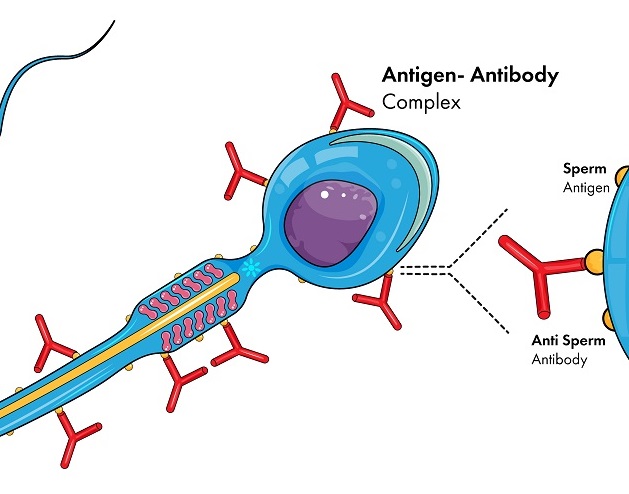 Every stallion owner’s worst nightmare: 2 months into the breeding season and your stallion is not settling his mares. His bloodlines are impeccable, and he had a great start to his performance career so this year you offered to stand him at stud to outside mares, and the response has been great, 40 mares booked in his first season! As a responsible and experienced stallion owner, you had a breeding soundness examination done and he passed with flying colors; good testicular size, good sperm production, good motility, concentration and morphology and his semen responded very well in a 48-hour cooled semen trial. He should be able to handle a book of 40 mares without problems.
Every stallion owner’s worst nightmare: 2 months into the breeding season and your stallion is not settling his mares. His bloodlines are impeccable, and he had a great start to his performance career so this year you offered to stand him at stud to outside mares, and the response has been great, 40 mares booked in his first season! As a responsible and experienced stallion owner, you had a breeding soundness examination done and he passed with flying colors; good testicular size, good sperm production, good motility, concentration and morphology and his semen responded very well in a 48-hour cooled semen trial. He should be able to handle a book of 40 mares without problems.
Low Sperm Count – What Can Be the Cause?
May 13, 2020
Posted by
Dr. Elena Martinez de Andino in
Stallion Management
 Obtaining a low sperm count from a stallion can be frustrating and the issue may or may not be able to be remedied depending on the cause. It is best to have a thorough Breeding Soundness Exam performed on the stallion in order to evaluate and determine why he is ejaculating low sperm numbers. An examination performed by a veterinarian well-versed in reproduction can provide valuable information. In this brief article, Dr. Elena Martinez de Andino of SBS Veterinary Services discusses two questions to consider when first trying to determine the cause of the low sperm numbers in an ejaculate.
Obtaining a low sperm count from a stallion can be frustrating and the issue may or may not be able to be remedied depending on the cause. It is best to have a thorough Breeding Soundness Exam performed on the stallion in order to evaluate and determine why he is ejaculating low sperm numbers. An examination performed by a veterinarian well-versed in reproduction can provide valuable information. In this brief article, Dr. Elena Martinez de Andino of SBS Veterinary Services discusses two questions to consider when first trying to determine the cause of the low sperm numbers in an ejaculate.
Method for Evaluating Stallion Sperm
July 15, 2019
Posted by
Dr. Ed Squires in
Stallion Management
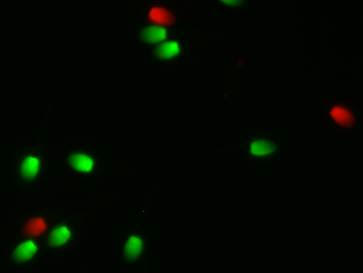 Those of us who work with stallions are routinely asked to determine a stallion’s fertility prior to breeding mares or to investigate the cause of low fertility. Often this requires sending the stallion to a specialized veterinary clinic or a veterinary school. Advances have been made in stallion fertility evaluations through the use of computerized sperm motion analyzers (CASA) and flow cytometry.
Those of us who work with stallions are routinely asked to determine a stallion’s fertility prior to breeding mares or to investigate the cause of low fertility. Often this requires sending the stallion to a specialized veterinary clinic or a veterinary school. Advances have been made in stallion fertility evaluations through the use of computerized sperm motion analyzers (CASA) and flow cytometry.
Endocrine Diagnosis of Infertility in Stallions
April 05, 2018
Posted by
Dr. Ed Squires in
Stallion Management
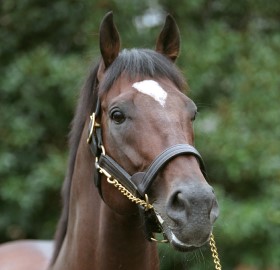 Diagnosis of infertility in stallions usually starts with a complete reproductive history and then collection of semen to evaluate seminal parameters, testis size and the potential presence of bacteria in the semen. A more detailed evaluation might also include drawing blood for hormonal analysis.
Diagnosis of infertility in stallions usually starts with a complete reproductive history and then collection of semen to evaluate seminal parameters, testis size and the potential presence of bacteria in the semen. A more detailed evaluation might also include drawing blood for hormonal analysis.
Methods to Obtain the Concentration of Sperm in a Stallion Ejaculate
February 02, 2018
Posted by
Erin Bishop, MS in
Stallion Management
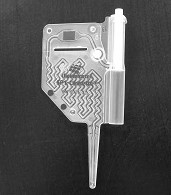 Knowing and keeping track of the concentration, or the number of sperm per milliliter, of each ejaculate for a stallion is very important for a variety of reasons. The concentration of his semen, along with the volume of his ejaculate, is used to determine the total number of sperm he produces in a given collection. These two numbers (volume and concentration) are used to calculate insemination doses. Also, keeping a record of each number can help stallion managers recognize if there are any changes in the reproductive health of the stallion. Slight variations are likely nothing to be concerned about. However, if the number of sperm in the ejaculate varies drastically, from collection to collection or a steady decrease in his total number of sperm over time, one may begin to ask what is causing the change. This information is valuable so that any concerns can be addressed as soon as they arise.
Knowing and keeping track of the concentration, or the number of sperm per milliliter, of each ejaculate for a stallion is very important for a variety of reasons. The concentration of his semen, along with the volume of his ejaculate, is used to determine the total number of sperm he produces in a given collection. These two numbers (volume and concentration) are used to calculate insemination doses. Also, keeping a record of each number can help stallion managers recognize if there are any changes in the reproductive health of the stallion. Slight variations are likely nothing to be concerned about. However, if the number of sperm in the ejaculate varies drastically, from collection to collection or a steady decrease in his total number of sperm over time, one may begin to ask what is causing the change. This information is valuable so that any concerns can be addressed as soon as they arise.
Shuttle Stallions - Frozen Semen to the Rescue
June 28, 2017
Posted by
SBS in
Stallion Management
 Shuttle or Dual-Hemisphere Stallions are terms used to describe breeding stallions which travel between the Northern and Southern Hemispheres for their respective breeding season. Several questions arise when discussing shuttle stallions and may include: Why do stallion owners incur the costs and risks of sending their stallions thousands of miles away? Does the lack of sexual rest affect their fertility? Is there a way to service mares in a different hemisphere without sending the stallion so many miles away?
Shuttle or Dual-Hemisphere Stallions are terms used to describe breeding stallions which travel between the Northern and Southern Hemispheres for their respective breeding season. Several questions arise when discussing shuttle stallions and may include: Why do stallion owners incur the costs and risks of sending their stallions thousands of miles away? Does the lack of sexual rest affect their fertility? Is there a way to service mares in a different hemisphere without sending the stallion so many miles away?
Seminal Plasma: The Good, The Bad and The Ugly
May 09, 2017
Posted by
Paul Loomis in
Stallion Management
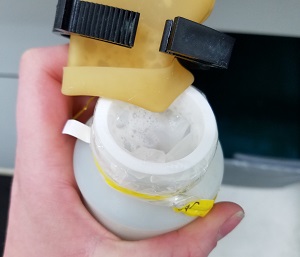 To understand why seminal plasma is beneficial in some situations and potentially harmful in others we must first review what it is, where it comes from and what we think are its roles in reproduction. The term seminal plasma refers to the fluid portion of ejaculated semen in which the spermatozoa are suspended. This fluid consists of secretions from the accessory sex glands in the stallion’s reproductive tract. These include the ampullae, the vesicular glands (seminal vesicles), the prostate gland and the bulbourethral glands (figure 1).
To understand why seminal plasma is beneficial in some situations and potentially harmful in others we must first review what it is, where it comes from and what we think are its roles in reproduction. The term seminal plasma refers to the fluid portion of ejaculated semen in which the spermatozoa are suspended. This fluid consists of secretions from the accessory sex glands in the stallion’s reproductive tract. These include the ampullae, the vesicular glands (seminal vesicles), the prostate gland and the bulbourethral glands (figure 1).
Ground Collection of the Stallion
August 06, 2016
Posted by
Dr. Erin Newkirk in
Stallion Management
For most facilities, using a phantom is the preferred method of collecting semen from a stallion, as it is an efficient, organized and generally a safe process that mimics the natural position during live breeding. Ground semen collection (see video below) is an alternative option to the typical collection of a stallion on a phantom or mount mare. This article describes ground semen collection, primarily summarizing previously published clinical and research reports of Sue McDonnell and colleagues at the University of Pennsylvania and Jim Crump of Roanoke AI.
Collecting a Fractionated Stallion Ejaculate
July 06, 2016
Posted by
SBS in
Stallion Management
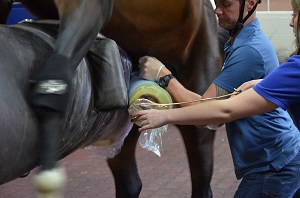 There are many reasons and techniques for collecting a fractionated ejaculate from a stallion. In this article we will discuss some reasons why and demonstrate the technique we have used in our laboratory to manage a stallion with excessive gel fraction that contaminates ejaculates collected using standard in-line filter equipment.
There are many reasons and techniques for collecting a fractionated ejaculate from a stallion. In this article we will discuss some reasons why and demonstrate the technique we have used in our laboratory to manage a stallion with excessive gel fraction that contaminates ejaculates collected using standard in-line filter equipment.
How to Manage the 'Slow' Stallion in the Breeding Shed
April 28, 2016
Posted by
Dr. Dave Scofield in
Stallion Management
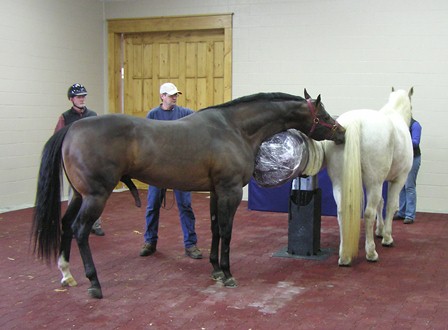 Juvenile and older males entering a new career as a breeding stallion don't have the luxury of a changing cascade of hormones or an event like parturition to jumpstart their innate nature to show them how to be a stallion. There is likely only a change in routine, location, or in their training schedule that cues them into their new roles as breeding animals. Many stallions make the transition seamlessly. Simply acting on the behavior they have been trying to use for years, allowing their behavior to mimic their springtime rise in testosterone. When exposed to a female, they have little doubt about the job at hand and will readily take to live cover or phantom training. Additional information for training the young stallion for collection can be found in our article, Collecting Semen from the Young Stallion. However, for some, the transition proves far more difficult and oftentimes frustrating for the stallion and for the staff at the shed.
Juvenile and older males entering a new career as a breeding stallion don't have the luxury of a changing cascade of hormones or an event like parturition to jumpstart their innate nature to show them how to be a stallion. There is likely only a change in routine, location, or in their training schedule that cues them into their new roles as breeding animals. Many stallions make the transition seamlessly. Simply acting on the behavior they have been trying to use for years, allowing their behavior to mimic their springtime rise in testosterone. When exposed to a female, they have little doubt about the job at hand and will readily take to live cover or phantom training. Additional information for training the young stallion for collection can be found in our article, Collecting Semen from the Young Stallion. However, for some, the transition proves far more difficult and oftentimes frustrating for the stallion and for the staff at the shed.
Are You Ready for Breeding Season?
February 03, 2016
Posted by
SBS in
Stallion Management
 It's best to prepare for breeding season before it arrives. Our library of news and blog articles can be a great resource for the new or experienced breeder, whether you have one mare or stallion, or manage the operations of a larger breeding farm. Here we will review our articles which encompass the subjects of breeding mares and stallions as well as their nutritional considerations. For additional information on the topics of pregnant and foaling mares as well as foaling and foal care visit Preparing for Foaling Season.
It's best to prepare for breeding season before it arrives. Our library of news and blog articles can be a great resource for the new or experienced breeder, whether you have one mare or stallion, or manage the operations of a larger breeding farm. Here we will review our articles which encompass the subjects of breeding mares and stallions as well as their nutritional considerations. For additional information on the topics of pregnant and foaling mares as well as foaling and foal care visit Preparing for Foaling Season.
Chemical Ejaculation of the Stallion
September 30, 2015
Posted by
Dr. Glenn Blodgett in
Stallion Management
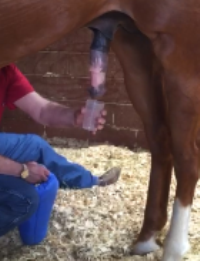 Dr. Glenn Blodgett is the horse division manager at the 6666 Ranch, a member of the SBS Affiliate Laboratory Network and the current president of the American Quarter Horse Association. In recent years, Dr. Blodgett has implemented the use of chemical ejaculation with one of the stallions in his care. In this article, he will share with us in what situations chemical ejaculation might be useful, recent research performed using the procedure, how he uses it in his breeding program and the success rate of his attempts.
Dr. Glenn Blodgett is the horse division manager at the 6666 Ranch, a member of the SBS Affiliate Laboratory Network and the current president of the American Quarter Horse Association. In recent years, Dr. Blodgett has implemented the use of chemical ejaculation with one of the stallions in his care. In this article, he will share with us in what situations chemical ejaculation might be useful, recent research performed using the procedure, how he uses it in his breeding program and the success rate of his attempts.
A Stallion Breeding Soundness Exam
July 30, 2015
Posted by
Dr. Ed Squires in
Stallion Management
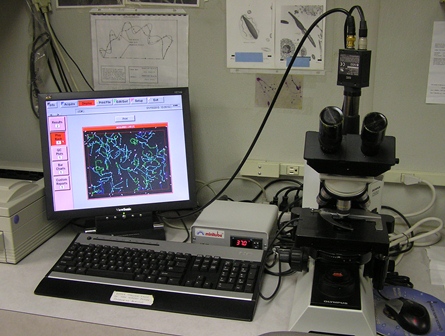 In our previous article, My Stallion is Not Settling His Mares…What Do I Do?, we discussed possible causes for the decline in a stallion’s fertility and areas of reproductive management one can investigate further to determine if the infertility can be suitably managed or resolved. One tool a stallion owner/manager can use to better understand the reproductive status of their stallion is to have a breeding soundness exam (BSE) performed. In this article, Dr. Ed Squires outlines the components of a routine BSE which include: physical exam, reproductive history, testes palpation and/or ultrasound, semen evaluation, cultures and an assessment of his sexual behavior. A BSE provides valuable information on how to manage the stud and gives an indication of the number of mares he could breed.
In our previous article, My Stallion is Not Settling His Mares…What Do I Do?, we discussed possible causes for the decline in a stallion’s fertility and areas of reproductive management one can investigate further to determine if the infertility can be suitably managed or resolved. One tool a stallion owner/manager can use to better understand the reproductive status of their stallion is to have a breeding soundness exam (BSE) performed. In this article, Dr. Ed Squires outlines the components of a routine BSE which include: physical exam, reproductive history, testes palpation and/or ultrasound, semen evaluation, cultures and an assessment of his sexual behavior. A BSE provides valuable information on how to manage the stud and gives an indication of the number of mares he could breed.
My Stallion is Not Settling His Mares...What Do I do? - Part 2
June 25, 2015
Posted by
SBS in
Stallion Management
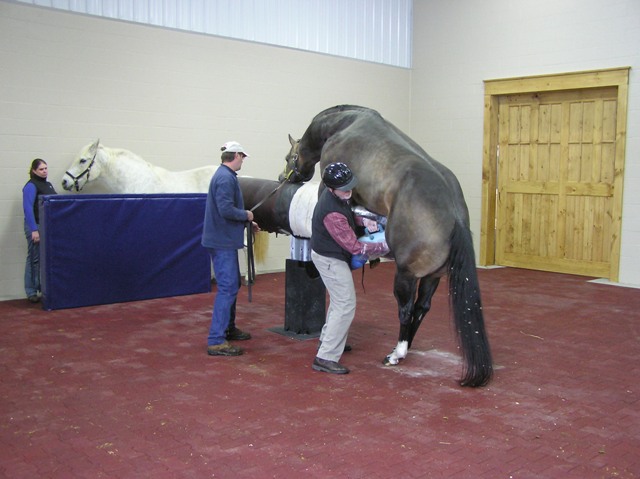 How a stallion owner/manager responds to and handles mare owner concerns regarding semen quality or fertility can make or break a relationship or reputation. This article aims to give stallion owners an overview of the factors involved and provide a systematic guide to troubleshooting a resolution if possible. In Part 1 of this article, published in last month’s newsletter, we discussed the stallion’s breeding history, the importance of a breeding soundness exam (BSE), and stallion management practices as well as semen quality and evaluation. This month in Part 2, we will review common problems identified after the semen evaluation, the relevance of the mare book and their reproductive status and discuss the topic as it relates to those stallions breeding with frozen semen.
How a stallion owner/manager responds to and handles mare owner concerns regarding semen quality or fertility can make or break a relationship or reputation. This article aims to give stallion owners an overview of the factors involved and provide a systematic guide to troubleshooting a resolution if possible. In Part 1 of this article, published in last month’s newsletter, we discussed the stallion’s breeding history, the importance of a breeding soundness exam (BSE), and stallion management practices as well as semen quality and evaluation. This month in Part 2, we will review common problems identified after the semen evaluation, the relevance of the mare book and their reproductive status and discuss the topic as it relates to those stallions breeding with frozen semen.
My Stallion is Not Settling His Mares...What Do I do? - Part 1
June 02, 2015
Posted by
SBS in
Stallion Management
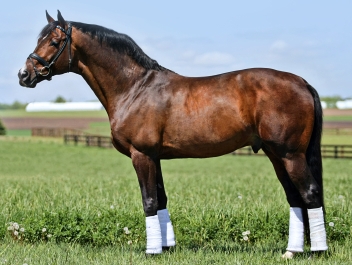 It is around this time of year that we receive calls for advice from anxious stallion owners concerned about a lower than anticipated conception rate for their stallion, in the hopes of finding some resolution and correcting any potential issues before the end of the breeding season. Time is running out to fulfill those breeding contracts and get those mares pregnant. There are so many variables that contribute to successful conception and pregnancy, from both the mare and the stallion side of things. From the stallion owners perspective they are looking to address the stallion’s semen quality, breeding management and reproductive status. But where to start? This article will give stallion owners an overview and provide a systematic guide to troubleshooting a resolution if possible. How a stallion owner/manager responds to and handles mare owner concerns regarding semen quality or fertility can make or break a relationship or reputation.
It is around this time of year that we receive calls for advice from anxious stallion owners concerned about a lower than anticipated conception rate for their stallion, in the hopes of finding some resolution and correcting any potential issues before the end of the breeding season. Time is running out to fulfill those breeding contracts and get those mares pregnant. There are so many variables that contribute to successful conception and pregnancy, from both the mare and the stallion side of things. From the stallion owners perspective they are looking to address the stallion’s semen quality, breeding management and reproductive status. But where to start? This article will give stallion owners an overview and provide a systematic guide to troubleshooting a resolution if possible. How a stallion owner/manager responds to and handles mare owner concerns regarding semen quality or fertility can make or break a relationship or reputation.
Declining Fertility in the Aged Stallion
May 06, 2015
Posted by
Dr. Regina Turner in
Stallion Management
Age-related testicular degeneration is a common problem in older stallions. This type of testicular degeneration is different than the degeneration that can be seen after, for example, an injury to the testes in a younger stallion. Following testicular trauma, many stallions are able to fully recover. However, age-related testicular degeneration results in progressive deterioration of the testes and an associated progressive decline in testicular function. Over time, affected stallions become progressively more subfertile and eventually may become sterile in association with decreases in semen quality, sperm numbers and testicular size. There is no proven treatment for age related testicular degeneration, although many therapies have been tried. In this article, Dr. Regina Turner of the New Bolton Center at the University of Pennsylvania, discusses the causes of age-related testicular degeneration, current research and how one can manage the breeding career of an aged stallion until a treatment or cure is found.
Balancing a Stallion's Life in the Breeding Shed with Competing in the Show Ring
February 26, 2015
Posted by
Natalie DeBerardinis in
Stallion Management
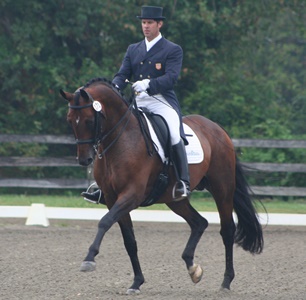 Successfully managing a stallion’s competition and breeding careers requires careful planning. It’s easy to forget that they are essentially being asked to have two distinctly different jobs. Each of his jobs place different physical and mental demands on the stallion and your management approach needs to account for all of those demands.
Successfully managing a stallion’s competition and breeding careers requires careful planning. It’s easy to forget that they are essentially being asked to have two distinctly different jobs. Each of his jobs place different physical and mental demands on the stallion and your management approach needs to account for all of those demands.
Heat Stress and Equine Reproduction
September 09, 2014
Posted by
Paul Loomis in
Stallion Management
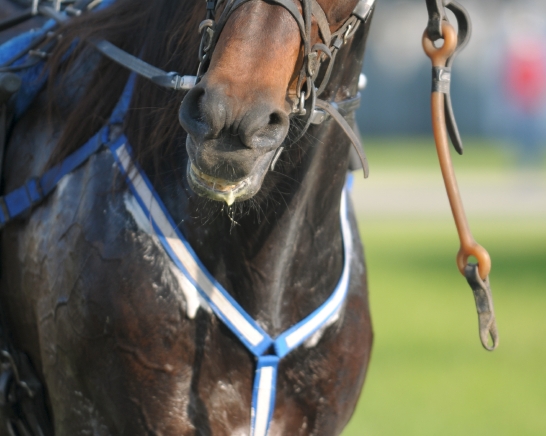 During those dog days of late summer and the end of the breeding season, most of us who work in equine reproduction are ready for a break. You are left with those difficult mares that didn’t settle earlier in the season and stallions that may be growing tired of breeding. Mares may not cycle as predictably or conceive as readily and stallions may be tougher to collect or exhibit a decrease in semen quality. One of the factors that can contribute to these problems is heat stress. As ambient temperatures rise, stallions and mares may experience disruptions to normal reproductive function as a result. This article will briefly describe some of the effects of heat stress on mare and stallion reproductive function.
During those dog days of late summer and the end of the breeding season, most of us who work in equine reproduction are ready for a break. You are left with those difficult mares that didn’t settle earlier in the season and stallions that may be growing tired of breeding. Mares may not cycle as predictably or conceive as readily and stallions may be tougher to collect or exhibit a decrease in semen quality. One of the factors that can contribute to these problems is heat stress. As ambient temperatures rise, stallions and mares may experience disruptions to normal reproductive function as a result. This article will briefly describe some of the effects of heat stress on mare and stallion reproductive function.
Sperm Accumulation in the Stallion
July 07, 2014
Posted by
Dr. Ed Squires and Dr. Pat McCue in
Stallion Management
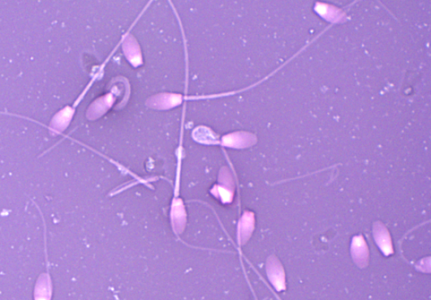 Have you ever wondered what happens to all those sperm the stallion produces every day (5 billion or more)? If he is not bred or collected then where do the sperm go? We know that sperm are produced in the testicle and move from the testicle into the efferent ducts and then into the head of the epididymis. It takes about 7-10 days for sperm to travel from the head of the epididymis to the cauda epididymis (tail; figure middle right). This time frame is not altered by how often the stallion ejaculates. The old wives tale that you can get immature sperm if the stallion is bred too often is just not true.
Have you ever wondered what happens to all those sperm the stallion produces every day (5 billion or more)? If he is not bred or collected then where do the sperm go? We know that sperm are produced in the testicle and move from the testicle into the efferent ducts and then into the head of the epididymis. It takes about 7-10 days for sperm to travel from the head of the epididymis to the cauda epididymis (tail; figure middle right). This time frame is not altered by how often the stallion ejaculates. The old wives tale that you can get immature sperm if the stallion is bred too often is just not true.
An Engaging Way to Promote Your Stallions with Social Media
June 02, 2014
Posted by
Chad Mendell in
Stallion Management
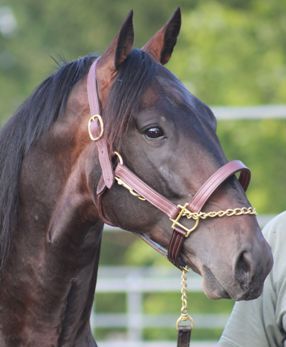 Each year, we survey horse professionals all over the world on how they promote their businesses. Word of mouth consistently tops the list but social media is not far behind. The two are very closely related and the reality is social media is word-of-mouth marketing on steroids. Not only are you able to talk to those people right in front of you but with social media you can talk to hundreds or thousands of people at once.
Each year, we survey horse professionals all over the world on how they promote their businesses. Word of mouth consistently tops the list but social media is not far behind. The two are very closely related and the reality is social media is word-of-mouth marketing on steroids. Not only are you able to talk to those people right in front of you but with social media you can talk to hundreds or thousands of people at once.
Value of Collecting Semen on One Mount
March 04, 2014
Posted by
SBS in
Stallion Management
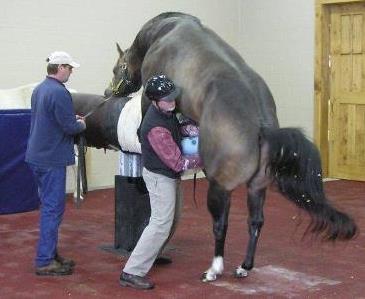 It is generally known that the quality of semen after freezing is dependent upon how good the semen is immediately after collection and prior to freezing. In some cases there is nothing one can do to improve the quality of the semen collected and one has to deal with the cards he has been given. However, there have been several management factors identified that adversely affect the quality of semen collected. The goal of every collector should be to carefully prepare the AV and collect the stallion on one mount. Each time a stallion mounts and enters the AV and does not ejaculate the pre-sperm is accumulated in the bottle. After each unsuccessful collection attempt the bottle should be replaced with a warm fresh bottle. If this does not occur we know that the quality of the semen will be decreased.
It is generally known that the quality of semen after freezing is dependent upon how good the semen is immediately after collection and prior to freezing. In some cases there is nothing one can do to improve the quality of the semen collected and one has to deal with the cards he has been given. However, there have been several management factors identified that adversely affect the quality of semen collected. The goal of every collector should be to carefully prepare the AV and collect the stallion on one mount. Each time a stallion mounts and enters the AV and does not ejaculate the pre-sperm is accumulated in the bottle. After each unsuccessful collection attempt the bottle should be replaced with a warm fresh bottle. If this does not occur we know that the quality of the semen will be decreased.
Processing Equine Semen for Cooled Transport
May 22, 2013
Posted by
Paul Loomis in
Stallion Management
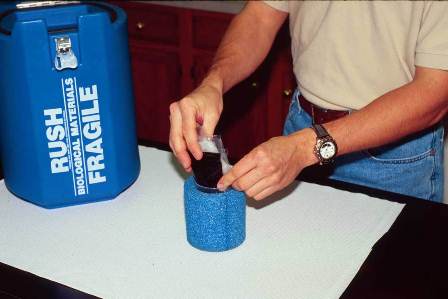 The advent of transported cooled semen significantly altered the logistics of the equine breeding industry. Shipping semen to mares rather than mares to stallions is incredibly more convenient; however it has resulted in the need for increased proficiency in semen processing techniques on the part of the stallion manager and expertise in reproductive technology and artificial insemination on the part of the field practitioner managing the mare. From the perspective of the stallion manager there are a number of factors that can influence the success of cooled transported semen such as stallion collection management, semen handling, extender composition, dilution rate, cooling rate, calculation of insemination dose and transport device. Our blog article this month will address the basic techniques for proper collection, evaluation and processing of stallion semen for cooled transport.
The advent of transported cooled semen significantly altered the logistics of the equine breeding industry. Shipping semen to mares rather than mares to stallions is incredibly more convenient; however it has resulted in the need for increased proficiency in semen processing techniques on the part of the stallion manager and expertise in reproductive technology and artificial insemination on the part of the field practitioner managing the mare. From the perspective of the stallion manager there are a number of factors that can influence the success of cooled transported semen such as stallion collection management, semen handling, extender composition, dilution rate, cooling rate, calculation of insemination dose and transport device. Our blog article this month will address the basic techniques for proper collection, evaluation and processing of stallion semen for cooled transport.
Collecting Semen from the Young Stallion
April 23, 2013
Posted by
Paul Loomis in
Stallion Management
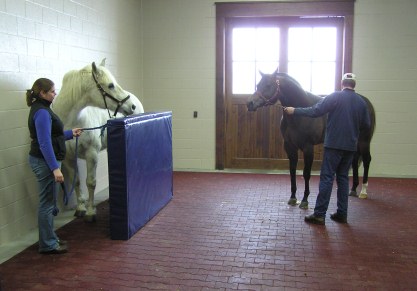 At SBS, we are often presented with young stallions for semen collection and evaluation. There are a variety of reasons that stallion owners want to have semen collected from their young stallions including; 1) evaluation of sperm production and quality to assess suitability as a breeding stallion, 2) training to collect on a phantom with an artificial vagina in preparation for a breeding career and 3) to collect and preserve semen from a young stallion prior to castration or starting a performance career.
At SBS, we are often presented with young stallions for semen collection and evaluation. There are a variety of reasons that stallion owners want to have semen collected from their young stallions including; 1) evaluation of sperm production and quality to assess suitability as a breeding stallion, 2) training to collect on a phantom with an artificial vagina in preparation for a breeding career and 3) to collect and preserve semen from a young stallion prior to castration or starting a performance career.
A Review of Reports for Reproductive Efficiency
August 30, 2012
Posted by
Julie Skaife in
Stallion Management
Last month we discussed the importance of tracking measures of reproductive efficiency, as promised this month we review some of the reported literature on reproductive success in various commercial programs. This is not intended as an exhaustive review of all the available literature on the subject. Rather, we have used specific references to illustrate various concepts related to reports of equine fertility.
Measuring Reproductive Efficiency
July 25, 2012
Posted by
Julie Skaife in
Stallion Management
Keeping good breeding records is one of the cornerstone principles of sound reproductive management. For many of you the breeding season is now coming to a close, whether you are a stallion owner reviewing the conception rates for the mares that were bred to your stallion, or a breeder reviewing the reproductive performance of your mare herd, now is a great time to start compiling the data. Best to do it now whilst your experiences are still fresh in your mind and you can readily lay your hands on the paperwork. Plus as a stallion owner it may take some time to get the feedback you need from your mare owners. In this blog article we discuss the importance of keeping detailed accurate breeding records and what parameters you should calculate and follow.
Should the US Adopt Stricter Controls on Cooled and Frozen Semen Production Facilities?
May 22, 2012
Posted by
Paul Loomis in
Stallion Management
In the United States there are very few regulations concerning the collection, processing, distribution and insemination of stallion semen. Any owner who can manage to extract semen from his or her stallion can without any prior training, experience, certification or license, sell semen from that stallion without restriction of any kind. There are only a few individual states that require certain testing for diseases potentially transmitted in semen but in most cases there is no requirement for such screening within the breeding population in the U.S. The USDA has regulations concerning the importation of semen and breeding animals into the U.S. from other countries but there is no USDA oversight to regulate the horse breeding industry within the borders of the country. This is also true in many other countries as well.
 Every stallion owner’s worst nightmare: 2 months into the breeding season and your stallion is not settling his mares. His bloodlines are impeccable, and he had a great start to his performance career so this year you offered to stand him at stud to outside mares, and the response has been great, 40 mares booked in his first season! As a responsible and experienced stallion owner, you had a breeding soundness examination done and he passed with flying colors; good testicular size, good sperm production, good motility, concentration and morphology and his semen responded very well in a 48-hour cooled semen trial. He should be able to handle a book of 40 mares without problems.
Every stallion owner’s worst nightmare: 2 months into the breeding season and your stallion is not settling his mares. His bloodlines are impeccable, and he had a great start to his performance career so this year you offered to stand him at stud to outside mares, and the response has been great, 40 mares booked in his first season! As a responsible and experienced stallion owner, you had a breeding soundness examination done and he passed with flying colors; good testicular size, good sperm production, good motility, concentration and morphology and his semen responded very well in a 48-hour cooled semen trial. He should be able to handle a book of 40 mares without problems. Diagnosis of infertility in stallions usually starts with a complete reproductive history and then collection of semen to evaluate seminal parameters, testis size and the potential presence of bacteria in the semen. A more detailed evaluation might also include drawing blood for hormonal analysis.
Diagnosis of infertility in stallions usually starts with a complete reproductive history and then collection of semen to evaluate seminal parameters, testis size and the potential presence of bacteria in the semen. A more detailed evaluation might also include drawing blood for hormonal analysis.  Obtaining a low sperm count from a stallion can be frustrating and the issue may or may not be able to be remedied depending on the cause. It is best to have a thorough
Obtaining a low sperm count from a stallion can be frustrating and the issue may or may not be able to be remedied depending on the cause. It is best to have a thorough  Those of us who work with stallions are routinely asked to determine a stallion’s fertility prior to breeding mares or to investigate the cause of low fertility. Often this requires sending the stallion to a specialized veterinary clinic or a veterinary school. Advances have been made in stallion fertility evaluations through the use of computerized sperm motion analyzers (CASA) and flow cytometry.
Those of us who work with stallions are routinely asked to determine a stallion’s fertility prior to breeding mares or to investigate the cause of low fertility. Often this requires sending the stallion to a specialized veterinary clinic or a veterinary school. Advances have been made in stallion fertility evaluations through the use of computerized sperm motion analyzers (CASA) and flow cytometry. Knowing and keeping track of the concentration, or the number of sperm per milliliter, of each ejaculate for a stallion is very important for a variety of reasons. The concentration of his semen, along with the volume of his ejaculate, is used to determine the total number of sperm he produces in a given collection. These two numbers (volume and concentration) are used to calculate insemination doses. Also, keeping a record of each number can help stallion managers recognize if there are any changes in the reproductive health of the stallion. Slight variations are likely nothing to be concerned about. However, if the number of sperm in the ejaculate varies drastically, from collection to collection or a steady decrease in his total number of sperm over time, one may begin to ask what is causing the change. This information is valuable so that any concerns can be addressed as soon as they arise.
Knowing and keeping track of the concentration, or the number of sperm per milliliter, of each ejaculate for a stallion is very important for a variety of reasons. The concentration of his semen, along with the volume of his ejaculate, is used to determine the total number of sperm he produces in a given collection. These two numbers (volume and concentration) are used to calculate insemination doses. Also, keeping a record of each number can help stallion managers recognize if there are any changes in the reproductive health of the stallion. Slight variations are likely nothing to be concerned about. However, if the number of sperm in the ejaculate varies drastically, from collection to collection or a steady decrease in his total number of sperm over time, one may begin to ask what is causing the change. This information is valuable so that any concerns can be addressed as soon as they arise. Shuttle or Dual-Hemisphere Stallions are terms used to describe breeding stallions which travel between the Northern and Southern Hemispheres for their respective breeding season. Several questions arise when discussing shuttle stallions and may include: Why do stallion owners incur the costs and risks of sending their stallions thousands of miles away? Does the lack of sexual rest affect their fertility? Is there a way to service mares in a different hemisphere without sending the stallion so many miles away?
Shuttle or Dual-Hemisphere Stallions are terms used to describe breeding stallions which travel between the Northern and Southern Hemispheres for their respective breeding season. Several questions arise when discussing shuttle stallions and may include: Why do stallion owners incur the costs and risks of sending their stallions thousands of miles away? Does the lack of sexual rest affect their fertility? Is there a way to service mares in a different hemisphere without sending the stallion so many miles away?  To understand why seminal plasma is beneficial in some situations and potentially harmful in others we must first review what it is, where it comes from and what we think are its roles in reproduction. The term seminal plasma refers to the fluid portion of ejaculated semen in which the spermatozoa are suspended. This fluid consists of secretions from the accessory sex glands in the stallion’s reproductive tract. These include the ampullae, the vesicular glands (seminal vesicles), the prostate gland and the bulbourethral glands (figure 1).
To understand why seminal plasma is beneficial in some situations and potentially harmful in others we must first review what it is, where it comes from and what we think are its roles in reproduction. The term seminal plasma refers to the fluid portion of ejaculated semen in which the spermatozoa are suspended. This fluid consists of secretions from the accessory sex glands in the stallion’s reproductive tract. These include the ampullae, the vesicular glands (seminal vesicles), the prostate gland and the bulbourethral glands (figure 1). Dr. Glenn Blodgett is the horse division manager at the 6666 Ranch, a member of the SBS Affiliate Laboratory Network and the current president of the American Quarter Horse Association. In recent years, Dr. Blodgett has implemented the use of chemical ejaculation with one of the stallions in his care. In this article, he will share with us in what situations chemical ejaculation might be useful, recent research performed using the procedure, how he uses it in his breeding program and the success rate of his attempts.
Dr. Glenn Blodgett is the horse division manager at the 6666 Ranch, a member of the SBS Affiliate Laboratory Network and the current president of the American Quarter Horse Association. In recent years, Dr. Blodgett has implemented the use of chemical ejaculation with one of the stallions in his care. In this article, he will share with us in what situations chemical ejaculation might be useful, recent research performed using the procedure, how he uses it in his breeding program and the success rate of his attempts.  In our previous article,
In our previous article,  It is around this time of year that we receive calls for advice from anxious stallion owners concerned about a lower than anticipated conception rate for their stallion, in the hopes of finding some resolution and correcting any potential issues before the end of the breeding season. Time is running out to fulfill those breeding contracts and get those mares pregnant. There are so many variables that contribute to successful conception and pregnancy, from both the mare and the stallion side of things. From the stallion owners perspective they are looking to address the stallion’s semen quality, breeding management and reproductive status. But where to start? This article will give stallion owners an overview and provide a systematic guide to troubleshooting a resolution if possible. How a stallion owner/manager responds to and handles mare owner concerns regarding semen quality or fertility can make or break a relationship or reputation.
It is around this time of year that we receive calls for advice from anxious stallion owners concerned about a lower than anticipated conception rate for their stallion, in the hopes of finding some resolution and correcting any potential issues before the end of the breeding season. Time is running out to fulfill those breeding contracts and get those mares pregnant. There are so many variables that contribute to successful conception and pregnancy, from both the mare and the stallion side of things. From the stallion owners perspective they are looking to address the stallion’s semen quality, breeding management and reproductive status. But where to start? This article will give stallion owners an overview and provide a systematic guide to troubleshooting a resolution if possible. How a stallion owner/manager responds to and handles mare owner concerns regarding semen quality or fertility can make or break a relationship or reputation. Successfully managing a stallion’s competition and breeding careers requires careful planning. It’s easy to forget that they are essentially being asked to have two distinctly different jobs. Each of his jobs place different physical and mental demands on the stallion and your management approach needs to account for all of those demands.
Successfully managing a stallion’s competition and breeding careers requires careful planning. It’s easy to forget that they are essentially being asked to have two distinctly different jobs. Each of his jobs place different physical and mental demands on the stallion and your management approach needs to account for all of those demands. During those dog days of late summer and the end of the breeding season, most of us who work in equine reproduction are ready for a break. You are left with those difficult mares that didn’t settle earlier in the season and stallions that may be growing tired of breeding. Mares may not cycle as predictably or conceive as readily and stallions may be tougher to collect or exhibit a decrease in semen quality. One of the factors that can contribute to these problems is heat stress. As ambient temperatures rise, stallions and mares may experience disruptions to normal reproductive function as a result. This article will briefly describe some of the effects of heat stress on mare and stallion reproductive function.
During those dog days of late summer and the end of the breeding season, most of us who work in equine reproduction are ready for a break. You are left with those difficult mares that didn’t settle earlier in the season and stallions that may be growing tired of breeding. Mares may not cycle as predictably or conceive as readily and stallions may be tougher to collect or exhibit a decrease in semen quality. One of the factors that can contribute to these problems is heat stress. As ambient temperatures rise, stallions and mares may experience disruptions to normal reproductive function as a result. This article will briefly describe some of the effects of heat stress on mare and stallion reproductive function. Have you ever wondered what happens to all those sperm the stallion produces every day (5 billion or more)? If he is not bred or collected then where do the sperm go? We know that sperm are produced in the testicle and move from the testicle into the efferent ducts and then into the head of the epididymis. It takes about 7-10 days for sperm to travel from the head of the epididymis to the cauda epididymis (tail; figure middle right). This time frame is not altered by how often the stallion ejaculates. The old wives tale that you can get immature sperm if the stallion is bred too often is just not true.
Have you ever wondered what happens to all those sperm the stallion produces every day (5 billion or more)? If he is not bred or collected then where do the sperm go? We know that sperm are produced in the testicle and move from the testicle into the efferent ducts and then into the head of the epididymis. It takes about 7-10 days for sperm to travel from the head of the epididymis to the cauda epididymis (tail; figure middle right). This time frame is not altered by how often the stallion ejaculates. The old wives tale that you can get immature sperm if the stallion is bred too often is just not true. Each year, we survey horse professionals all over the world on how they promote their businesses. Word of mouth consistently tops the list but social media is not far behind. The two are very closely related and the reality is social media is word-of-mouth marketing on steroids. Not only are you able to talk to those people right in front of you but with social media you can talk to hundreds or thousands of people at once.
Each year, we survey horse professionals all over the world on how they promote their businesses. Word of mouth consistently tops the list but social media is not far behind. The two are very closely related and the reality is social media is word-of-mouth marketing on steroids. Not only are you able to talk to those people right in front of you but with social media you can talk to hundreds or thousands of people at once.  It is generally known that the quality of semen after freezing is dependent upon how good the semen is immediately after collection and prior to freezing. In some cases there is nothing one can do to improve the quality of the semen collected and one has to deal with the cards he has been given. However, there have been several management factors identified that adversely affect the quality of semen collected. The goal of every collector should be to carefully prepare the AV and collect the stallion on one mount. Each time a stallion mounts and enters the AV and does not ejaculate the pre-sperm is accumulated in the bottle. After each unsuccessful collection attempt the bottle should be replaced with a warm fresh bottle. If this does not occur we know that the quality of the semen will be decreased.
It is generally known that the quality of semen after freezing is dependent upon how good the semen is immediately after collection and prior to freezing. In some cases there is nothing one can do to improve the quality of the semen collected and one has to deal with the cards he has been given. However, there have been several management factors identified that adversely affect the quality of semen collected. The goal of every collector should be to carefully prepare the AV and collect the stallion on one mount. Each time a stallion mounts and enters the AV and does not ejaculate the pre-sperm is accumulated in the bottle. After each unsuccessful collection attempt the bottle should be replaced with a warm fresh bottle. If this does not occur we know that the quality of the semen will be decreased.  The advent of transported cooled semen significantly altered the logistics of the equine breeding industry. Shipping semen to mares rather than mares to stallions is incredibly more convenient; however it has resulted in the need for increased proficiency in semen processing techniques on the part of the stallion manager and expertise in reproductive technology and artificial insemination on the part of the field practitioner managing the mare. From the perspective of the stallion manager there are a number of factors that can influence the success of cooled transported semen such as stallion collection management, semen handling, extender composition, dilution rate, cooling rate, calculation of insemination dose and transport device. Our blog article this month will address the basic techniques for proper collection, evaluation and processing of stallion semen for cooled transport.
The advent of transported cooled semen significantly altered the logistics of the equine breeding industry. Shipping semen to mares rather than mares to stallions is incredibly more convenient; however it has resulted in the need for increased proficiency in semen processing techniques on the part of the stallion manager and expertise in reproductive technology and artificial insemination on the part of the field practitioner managing the mare. From the perspective of the stallion manager there are a number of factors that can influence the success of cooled transported semen such as stallion collection management, semen handling, extender composition, dilution rate, cooling rate, calculation of insemination dose and transport device. Our blog article this month will address the basic techniques for proper collection, evaluation and processing of stallion semen for cooled transport.
